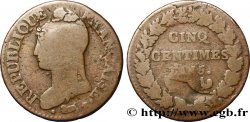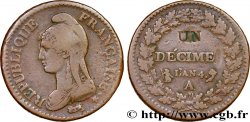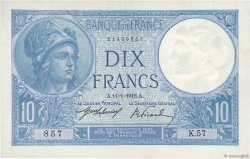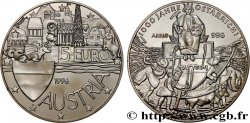Live auction - fme_705368 - DIRECTOIRE Médaille, Conseil des Cinq-Cents
You must signin and be an approved bidder to bid, LOGIN TO BID. Accounts are subject to approval and the approval process takes place within 48 hours. Do not wait until the day a sale closes to register. Clicking on "BID" constitutes acceptance of the terms of use of cgb.fr private live auctions.
Bids must be placed in whole Euro amounts only. The sale will start closing at the time stated on the item description; any bids received at the site after the closing time will not be executed. Transmission times may vary and bids could be rejected if you wait until the last second. For further information check the Live auction FAQ
All winning bids are subject to a 18% buyer’s fee.
All winning bids are subject to a 18% buyer’s fee.
| Estimate : | 400 € |
| Price : | 820 € |
| Maximum bid : | 820 € |
| End of the sale : | 08 March 2022 18:51:20 |
| bidders : | 2 bidders |
Type : Médaille, Conseil des Cinq-Cents
Date: 1795-1796
Metal : silver
Diameter : 47,5 mm
Orientation dies : 6 h.
Weight : 30,33 g.
Edge : lisse
Puncheon : sans poinçon
Rarity : R2
Coments on the condition:
Exemplaire ayant été nettoyé, quelques traces de frottement dans les champs. Présence de quelques fines rayures. Des coups sur la tranche
Obverse
Obverse legend : REP. FR. / CONSEIL / DES / CINQ-CENTS..
Obverse description : Inscription en 4 lignes, équerre et pendule à l’exergue.
Reverse
Reverse legend : FELIX FAULCON / REPRESENTANT. / DU / PEUPLE. / AN 4.
Reverse description : Inscription en 5 lignes.
Commentary
Cet exemplaire a été attribué à Félix Faulcon pour l’an IV (1795-1796). De son nom complet, Marie-Félix Faulcon, chevalier de La Parisière, sieur de La Fenestre (1758-1843) est un juriste, homme de lettres, historien et homme politique français. Député aux États généraux de 1789 (jusqu’au 30 septembre 1791), il sera ensuite député de la Vienne (représentant du peuple) à partir du 15 octobre 1795 jusqu’au 1er juillet 1804.
Il y combattit un projet de remplacement des fonctionnaires par le Directoire, s'opposa à l'admission de sept membres présentés pour compléter le Corps législatif, demanda le rapport de l'article 19 de la loi du 30 vendémiaire, et vota contre le recours en cassation des jugements de la haute cour. En l'an V, il opina en faveur des projets de Daunou sur « la répression des abus de la presse », défendit la cause d'incompatibilité d'humeur pour le divorce, etc.
Le Conseil des Cinq-Cents, “chambre basse”, était l'une des deux Assemblées du Directoire. Composé de 500 députés comme son nom l'indique, le Conseil était élu au suffrage censitaire à deux tours, conformément à la Constitution de l'An III, chacun devait être âgé de plus de 30 ans et résidant depuis au moins dix ans sur le territoire national. Les citoyens de chaque canton, hommes majeurs de vingt et un ans, payant une contribution directe ou justifiant de services militaires actifs dans l'armée et résidant en France depuis au moins un an, se réunissaient en assemblées primaires afin de désigner un « grand électeur » pour 200 habitants. Le Conseil avait l'initiative des projets de Loi soumis ensuite au Conseil des Anciens, “chambre haute”. Ses députés dressaient la liste où le Conseil des Anciens devait choisir les Directeurs. Après les élections de l'An V, la majorité thermidorienne disparut. L'Assemblée fut renversée et dissoute par le Coup d'État de Bonaparte le 18 brumaire An 8 (9 novembre 1799).
Il y combattit un projet de remplacement des fonctionnaires par le Directoire, s'opposa à l'admission de sept membres présentés pour compléter le Corps législatif, demanda le rapport de l'article 19 de la loi du 30 vendémiaire, et vota contre le recours en cassation des jugements de la haute cour. En l'an V, il opina en faveur des projets de Daunou sur « la répression des abus de la presse », défendit la cause d'incompatibilité d'humeur pour le divorce, etc.
Le Conseil des Cinq-Cents, “chambre basse”, était l'une des deux Assemblées du Directoire. Composé de 500 députés comme son nom l'indique, le Conseil était élu au suffrage censitaire à deux tours, conformément à la Constitution de l'An III, chacun devait être âgé de plus de 30 ans et résidant depuis au moins dix ans sur le territoire national. Les citoyens de chaque canton, hommes majeurs de vingt et un ans, payant une contribution directe ou justifiant de services militaires actifs dans l'armée et résidant en France depuis au moins un an, se réunissaient en assemblées primaires afin de désigner un « grand électeur » pour 200 habitants. Le Conseil avait l'initiative des projets de Loi soumis ensuite au Conseil des Anciens, “chambre haute”. Ses députés dressaient la liste où le Conseil des Anciens devait choisir les Directeurs. Après les élections de l'An V, la majorité thermidorienne disparut. L'Assemblée fut renversée et dissoute par le Coup d'État de Bonaparte le 18 brumaire An 8 (9 novembre 1799).








 Report a mistake
Report a mistake Print the page
Print the page Share my selection
Share my selection Ask a question
Ask a question Consign / sell
Consign / sell
 Full data
Full data












